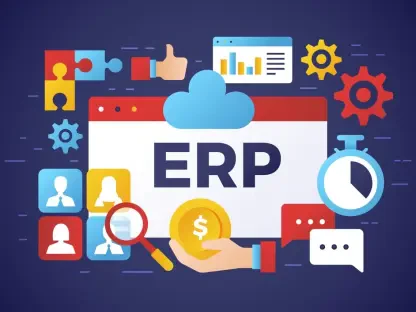Understanding AI’s Role in the SaaS Landscape
The Software-as-a-Service (SaaS) industry stands at a pivotal moment, with artificial intelligence (AI) emerging as a transformative force amid a global market that continues to expand rapidly. Valued at billions of dollars, the SaaS sector serves businesses of all sizes, delivering cloud-based solutions that drive efficiency and scalability. Yet, as companies integrate AI into their offerings, a pressing question arises: is this technology truly revolutionizing the landscape, or is its impact overstated? This report dives into the intersection of AI and SaaS, exploring how this powerful tool is reshaping the industry while separating fact from fiction.
AI’s influence on SaaS extends beyond mere buzzwords, fundamentally altering software development, product functionality, and internal operations. By automating repetitive tasks and enhancing decision-making through data insights, AI enables providers to deliver more robust solutions at a faster pace. This shift not only streamlines the creation of new features but also reduces technical debt, allowing companies to focus on innovation rather than maintenance.
Key players in the SaaS market, including established giants and agile startups, are driving AI adoption under the pressure of technological advancements and competitive demands. These organizations leverage AI to differentiate their offerings, whether through smarter analytics or personalized user experiences. Moreover, the relevance of AI spans diverse SaaS segments, from customer relationship management to cybersecurity, addressing modern business needs for agility, cost-efficiency, and data-driven strategies in an increasingly digital world.
Current Trends and Market Insights in AI-Driven SaaS
Emerging Trends Shaping the Industry
AI is redefining software engineering within the SaaS domain by boosting productivity through tools that assist in coding, debugging, and testing. These advancements empower senior developers to maximize output while reducing dependency on larger teams, reshaping traditional workflows. This internal efficiency translates into quicker updates and higher-quality products for end users, even if the benefits remain largely behind the scenes.
Customer expectations are evolving alongside these technological strides, with many now viewing AI capabilities as standard rather than premium features in SaaS platforms. This shift in perception challenges providers to integrate intelligent automation and predictive analytics without expecting immediate financial returns. As a result, the focus turns toward maintaining competitive parity rather than pioneering untested innovations.
Immediate value drivers such as legacy modernization and workflow automation are gaining traction as practical applications of AI. Modernizing outdated systems with AI tools reduces costs and risks, particularly in regulated industries, while automation streamlines processes in areas like legal operations and customer support. However, market dynamics and competitive pressures often lead to cautious adoption, with many companies testing AI in controlled environments before full-scale implementation.
Market Data and Growth Projections
Recent data highlights a steady rise in AI adoption within the SaaS sector, with a significant percentage of providers incorporating these tools into their offerings. Industry analyses suggest that the market for AI-enhanced SaaS solutions is poised for substantial growth, with projections indicating a compound annual growth rate that could reshape the landscape over the next few years. This momentum reflects a growing reliance on AI to meet business demands.
Performance indicators further underscore AI’s impact, showing notable gains in development efficiency and reductions in operational costs for providers. These metrics point to tangible benefits, even as customer-facing innovations struggle to drive direct revenue. The data paints a picture of an industry leveraging AI for internal optimization while navigating the complexities of market readiness.
Looking ahead, AI is expected to fuel SaaS market expansion by enabling new product categories and enhancing scalability from this year through 2027. As businesses increasingly prioritize digital transformation, the demand for AI-driven solutions will likely intensify. This forward-looking perspective suggests that strategic investments in AI could position SaaS providers for long-term success in a competitive environment.
Challenges Facing AI Integration in SaaS
The integration of AI into SaaS is not without hurdles, with a notable gap between the hype surrounding this technology and actual customer demand. Many buyers remain skeptical of AI’s value, viewing it as an add-on rather than a core necessity. This disconnect poses a challenge for providers aiming to justify investments in cutting-edge features.
Technological barriers also complicate adoption, particularly the rising consumption costs tied to automation and increased cloud resource usage. As AI-driven processes scale, both providers and clients face higher expenses under usage-based pricing models. This unforeseen financial burden threatens to offset the efficiency gains that initially made AI attractive.
Market-driven issues add another layer of complexity, as providers struggle to command premium pricing for AI functionalities that customers expect as standard. To overcome these obstacles, a focus on measurable outcomes—such as cost savings or faster delivery—and rigorous cost management becomes essential. Aligning AI initiatives with clear business value can help bridge the gap between expectation and reality.
Regulatory and Compliance Considerations for AI in SaaS
The regulatory landscape for AI-driven SaaS is intricate, shaped by stringent data privacy and security laws that vary across regions. Compliance with frameworks like GDPR and CCPA is critical, as mishandling sensitive information can result in severe penalties. SaaS providers must navigate these rules to build trust and ensure uninterrupted service delivery.
In industries such as finance and healthcare, where AI modernization holds immense potential, adherence to sector-specific regulations is non-negotiable. These sectors demand robust safeguards to protect patient data or financial records, making compliance a cornerstone of AI integration. Failure to meet these standards can halt innovation and damage reputations.
Security measures play a vital role in safeguarding AI-enhanced platforms and customer data from evolving threats. As regulatory changes loom on the horizon, they could further influence AI adoption by imposing new requirements or restrictions. SaaS businesses must stay proactive, adapting practices to align with legal shifts while maintaining a focus on protecting user trust.
The Future of AI in SaaS: Opportunities and Disruptions
Emerging technologies promise to deepen AI’s integration into SaaS, with innovations like advanced machine learning models paving the way for more sophisticated offerings. These advancements could unlock capabilities previously out of reach, enhancing personalization and predictive power. Staying ahead of such developments will be crucial for providers seeking a competitive edge.
Market disruptors, including mass customization and entirely new AI-driven product categories, loom as potential game-changers. These shifts could redefine how SaaS solutions are designed and consumed, catering to niche demands with unprecedented precision. Meanwhile, consumer preferences are gradually aligning with AI capabilities, signaling a slow but steady change in buyer behavior.
Global economic conditions, regulatory evolution, and ongoing innovation will shape the trajectory of AI in SaaS. Economic downturns might temper investment, while supportive policies could accelerate growth. Balancing these external factors with internal strategies will determine how effectively the industry capitalizes on AI’s long-term potential.
Conclusion: Balancing Promise with Pragmatism in AI-Driven SaaS
Reflecting on the insights gathered, it becomes clear that AI’s impact on the SaaS industry is most pronounced in operational efficiencies and targeted applications like legacy system upgrades. The technology demonstrates significant value in streamlining internal processes, even as its influence on customer behavior and revenue remains limited. This nuanced reality underscores a need for tempered expectations.
Moving forward, SaaS providers are advised to adopt a strategic mindset, prioritizing AI investments that deliver clear, measurable benefits over speculative ventures. Focusing on cost management and aligning innovations with buyer readiness emerges as critical steps to sustain momentum. Additionally, fostering partnerships in industries hungry for modernization offers a pathway to solidify market presence.
The journey ahead demands vigilance in navigating rising costs and regulatory landscapes, with an emphasis on building trust through robust security practices. By embracing a pragmatic approach, the SaaS sector can unlock AI’s fuller potential, paving the way for sustainable growth and innovation in a dynamic digital era.









